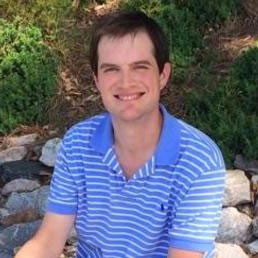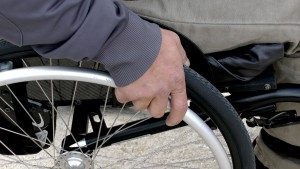by Bernhard Walke

My wife Rosa and our daughter Elena.
Our Saturday routine usually consists of breakfast, followed by a visit to the library to pick out one DVD and twelve books (one or two in Spanish). All that decision-making is punctuated by a trip to the grocery store.
At the grocery store, we meander through the aisles, look for what’s in season or on sale and conjure up recipes for the week. Our trip concludes in the refrigerated aisle where Elena gets to use her eyes to select what flavor yoghurt she would like for the week. Rosa always helps the cashier bag the groceries in her reusable plastic mercado bags from Mexico, and she is always thanked for her effort.
After we go out to the car, unload the groceries, get Elena seated, and put away the wheelchair, Rosa always makes a point of putting the shopping cart either back into the corral or in the hands of the attendant who is collecting shopping carts from the lot. We have a handicapped-parking placard, but Rosa has never left a cart in the extra space provided or in any other part of the lot.
I often tease my wife, accusing her of doing this because she likes things to be organized. That, or she’s a strict rule-follower. In reality, I see her insistence to help bag the groceries and put away the shopping carts as a selfless act that makes a stranger’s day better and easier. She wants to be helpful. I’ve always loved this about her.
When I began writing about my daughter in a public forum, I received several emails from people complimenting us on the work that we’ve done with Elena to ensure that she is progressing both academically and physically. My blog posts often illustrate a picture of parenting a child with a disability that is full of endless potential, hope, and inspiration. Parenting a child with a disability can also be an exercise in intense frustration, isolation and diminishing patience.
Rosa treats Elena with small acts of patience, care, and tenderness that soothe and calm our daughter. Just like lending a hand to bag the groceries and put away the shopping carts, the small and humble gestures Rosa uses when she’s with Elena are the actions that make the biggest impact.
A few months ago, Elena had to undergo general anesthesia to receive Botox injections in her legs to loosen up some of her muscle tone. Elena emerged from the anesthesia disoriented and confused. As she collected her thoughts, she realized that her legs hurt. She was very angry and upset, and she was unable to verbally communicate what was wrong. She wanted her mother.
Rosa cradled our five-year-old, compassionately held her, and began to patiently give her some apple juice. Elena calmed from terrified shrieking to barely audible whimpering. Again, it’s not public grandiose gestures that make my wife a good mother, it’s the small meaningful ones that do.
Happy mother’s day, Rosa.
















